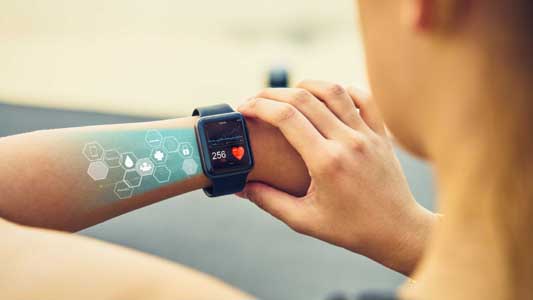Introduction
The wearable electronics market in India has witnessed remarkable growth over the past few years, driven by technological advancements, increasing health consciousness, and competitive pricing strategies. As businesses look to capitalize on this burgeoning sector, understanding the latest trends and data is crucial for making informed decisions.
Market Overview
According to the International Data Corporation (IDC), India’s wearable device market grew by 34% in 2023, reaching a record 134.2 million units. This growth is attributed to the rising demand for smartwatches, earwear, and other wearable devices, fueled by affordability and a plethora of options available to consumers.
The Indian wearable electronics market has experienced notable fluctuations over the past two years, reflecting shifts in consumer behavior, technological advancements, and market dynamics. In 2023, the market witnessed a substantial growth of 34%, with shipments reaching 134.2 million units. This surge was primarily driven by the affordability of devices, low product penetration, and a plethora of options available to consumers. Smartwatches, in particular, saw a remarkable 74% year-on-year increase, totaling 53.2 million units.
However, this upward trajectory did not continue into 2024. For the first time, the market experienced a decline, with shipments falling by 11.3% to 119 million units. The smartwatch segment was notably affected, recording a sharp decline of 34.4%. This downturn is attributed to a lack of meaningful innovations and technological advancements, leading to muted consumer demand. The average selling price (ASP) for smartwatches also decreased by 9.1%, from $25.8 to $23.5.
Conversely, the earwear category demonstrated resilience, registering a modest growth of 3.8% year-on-year, with shipments totaling 83.5 million units. Within this category, the Truly Wireless Stereo (TWS) segment reached a record 70.9% market share, up from 67.2% the previous year, growing by 9.4%. In contrast, neckband shipments declined by 17.1%.
Distribution channels also experienced shifts. Shipments to offline channels grew by 7.2%, increasing their share to 37.8% from 31.3% a year ago. Meanwhile, online channel shipments declined by 19.7% year-on-year, primarily due to the significant drop in online smartwatch shipments, which fell by 43.0%.
Looking ahead, the Indian wearables market is expected to remain flat in 2025. The anticipated decline in the smartwatch category is likely to offset the earwear segment’s single-digit growth. Emerging categories, such as smart rings and smart glasses, are projected to experience high double-digit growth. Innovations are expected to focus on the convergence of advanced sensing technologies and artificial intelligence applications, with more sophisticated health monitoring features like blood pressure monitoring coming to the forefront.
For businesses operating in the Indian wearable electronics market, these trends underscore the importance of continuous innovation and differentiation. Addressing consumer demand for advanced features and leveraging emerging technologies will be crucial in navigating the evolving landscape and capitalizing on growth opportunities in this dynamic market.
Key Trends and Insights
- Smartwatch Dominance: Smartwatch shipments soared by 73.7% year-over-year (YoY) in 2023, with 53.4 million units shipped. The festive season sales and heavy discounts led to a significant drop in average selling prices (ASPs), making smartwatches more accessible to a broader audience.
- Earwear Growth: The earwear category registered a modest 16.9% YoY growth, reaching 80.4 million units. The Truly Wireless Stereo (TWS) segment saw a record 67.3% share within earwear, growing by 42.3% YoY.
- Vendor Strategies: Leading vendors like BoAt, Noise, and Fire-Bolt have maintained their positions through diversified product portfolios and constant innovations. New entrants like BeatXP and Titan have also made significant strides by leveraging aggressive online marketing and strategic product launches.
- Offline Channel Expansion: Shipments to offline channels outgrew online ones, with a 55.6% YoY growth. Vendors are increasingly focusing on expanding their retail presence to capture a larger market share.
Top wearable electronics brands
Here are the top wearable electronics brands in India:
- boAt: Leading the market with a significant share of 26.6% in Q2 2023, boAt is known for its affordable and stylish earwear and smartwatches.
- Noise: Holding the second position with a 13.5% market share, Noise is popular for its innovative smartwatches and earwear.
- Oppo: With a 10.7% market share, Oppo offers a range of smartwatches and fitness bands that are well-received in the Indian market.
- Fire-Boltt: This brand has captured a 9.5% market share, known for its feature-rich and competitively priced smartwatches.
- Boult: Ranking fifth with a 6.6% market share, Boult is recognized for its high-quality earwear products.
These brands have successfully tapped into the growing demand for wearable electronics in India by offering a mix of affordability, innovation, and quality.
Most popular smartwatches
Here are some features of popular smartwatches available in India:
1. Apple Watch Series 9
- Display: Always-on Retina display
- Health Tracking: ECG, blood oxygen monitoring, heart rate tracking
- Connectivity: GPS + Cellular
- Battery Life: Up to 18 hours
- Additional Features: Fall detection, emergency SOS, water resistance up to 50 meters
2. Samsung Galaxy Watch6
- Display: Circular AMOLED display
- Health Tracking: Heart rate monitoring, sleep tracking, SpO2
- Connectivity: Bluetooth, Wi-Fi, LTE
- Battery Life: Up to 40 hours
- Additional Features: Advanced fitness tracking, robust build for outdoor use
3. Fire-Boltt Phoenix Pro
- Display: 1.39-inch round display
- Health Tracking: Heart rate monitoring, SpO2, sleep tracking
- Connectivity: Bluetooth calling
- Battery Life: Up to 7 days
- Additional Features: 120+ sports modes, metal body
4. Amazfit GTR 2
- Display: 46mm HD AMOLED display
- Health Tracking: Heart rate monitoring, SpO2, sleep tracking
- Connectivity: Bluetooth
- Battery Life: Up to 14 days
- Additional Features: Built-in GPS, music storage and playback
5. CrossBeats Nexus
- Display: 2.01-inch AMOLED display
- Health Tracking: Heart rate monitoring, SpO2, sleep tracking
- Connectivity: Bluetooth calling
- Battery Life: Up to 30 days in standby mode
- Additional Features: AI-powered features, extensive sports modes
These smartwatches offer a range of features catering to different needs, from health tracking to connectivity and battery life.
And yes, there are several user reviews available for smartwatches. Here are some insights from recent reviews:
Amazfit Bip 3
- Pros: Users appreciate its long battery life, accurate GPS tracking, and affordability. Many find it comfortable for extended wear and suitable for outdoor activities like hiking.
- Cons: Some users mention that the display could be brighter and the interface more intuitive.
Fire-Boltt Oracle
- Pros: Reviewers highlight its durable build, effective GPS tracking, and the convenience of Bluetooth calling. It’s praised for its water resistance and multiple sports modes.
- Cons: A few users have noted occasional connectivity issues with the Bluetooth calling feature.
Noise ColorFit Pro 5
- Pros: Users love its customizable watch faces, extensive sports modes, and reliable health tracking features. It’s considered a good value for money.
- Cons: Some users feel the battery life could be better and the touch response more responsive.
Realme Watch 3
- Pros: Reviewers appreciate its affordable price, Bluetooth calling, and multiple sports modes. It’s noted for its comfortable fit and decent battery life.
- Cons: Some users mention that the display quality could be improved and the app interface more user-friendly.
Redmi Watch 5 Lite
- Pros: Users praise its built-in GPS, water resistance, and comprehensive health tracking features. It’s considered a great option for outdoor activities.
- Cons: A few users have reported issues with the accuracy of the heart rate monitor.
These reviews provide a good overview of the strengths and weaknesses of each smartwatch, helping you make an informed decision based on your needs.
Future Prospects
The wearable technology market in India is expected to reach a projected revenue of USD 7,327.8 million by 2030, growing at a compound annual growth rate (CAGR) of 15.3% from 2024 to 2030. Wrist-wear remains the largest revenue-generating product, driven by continuous innovations and consumer demand for health tracking features.
Conclusion
The wearable electronics market in India presents significant opportunities for businesses looking to invest in this dynamic sector. With the market expected to grow substantially in the coming years, companies must stay abreast of the latest trends and data to make strategic decisions that align with consumer preferences and technological advancements.
Call to Action
For businesses aiming to enter or expand in the Indian wearable electronics market, it is essential to focus on affordability, innovation, and strategic marketing. By leveraging these key factors, companies can position themselves for success in this rapidly evolving industry.













